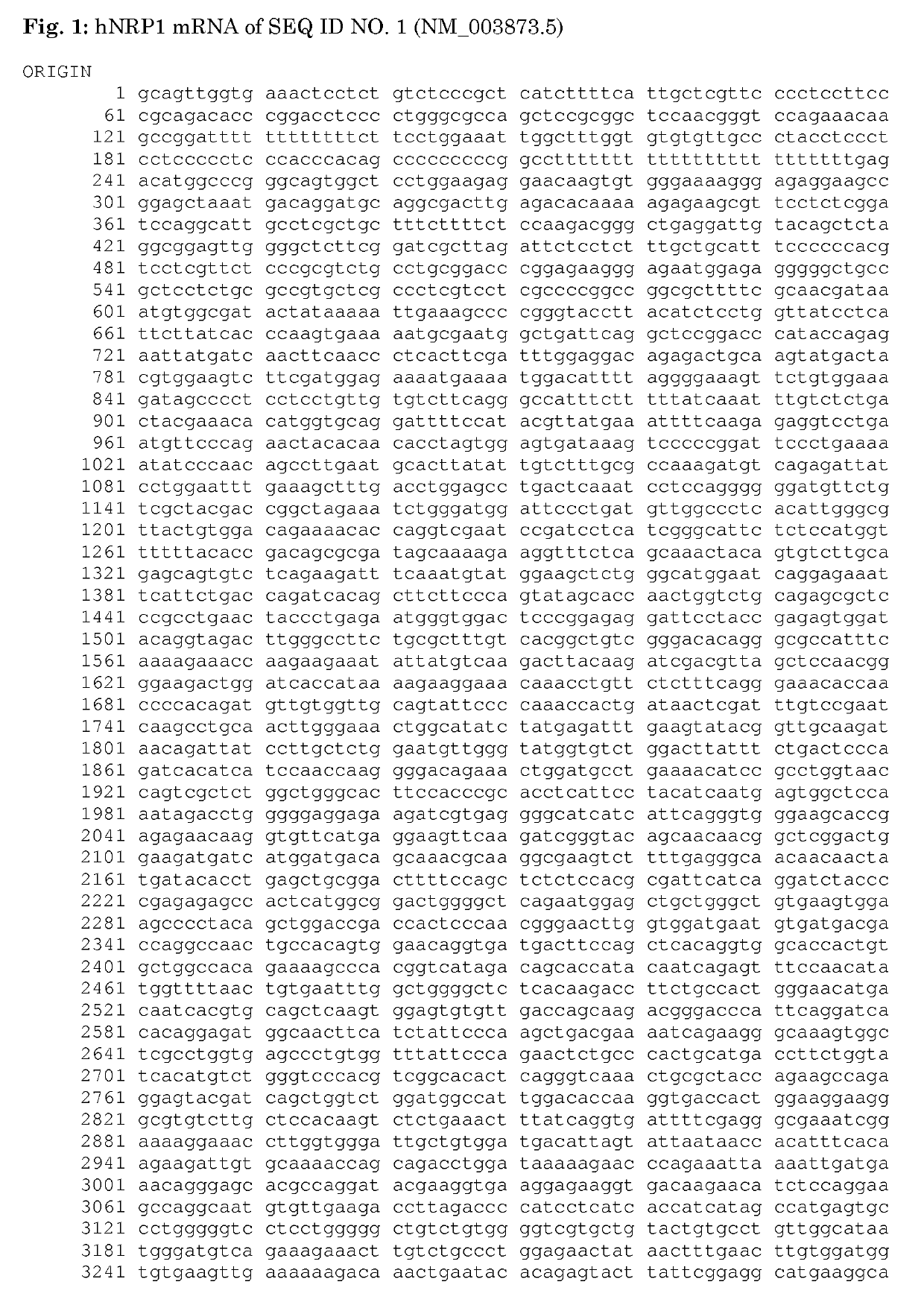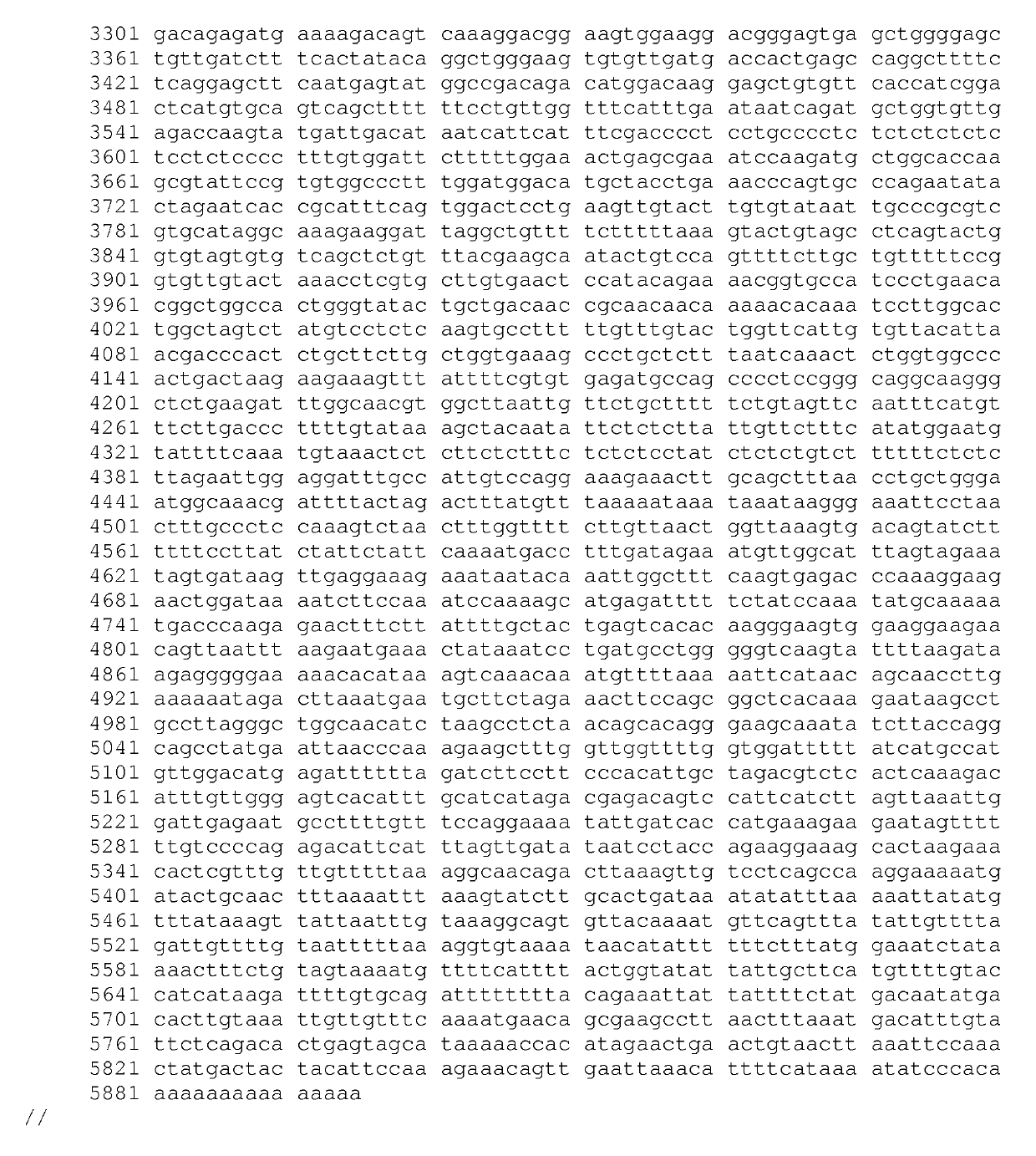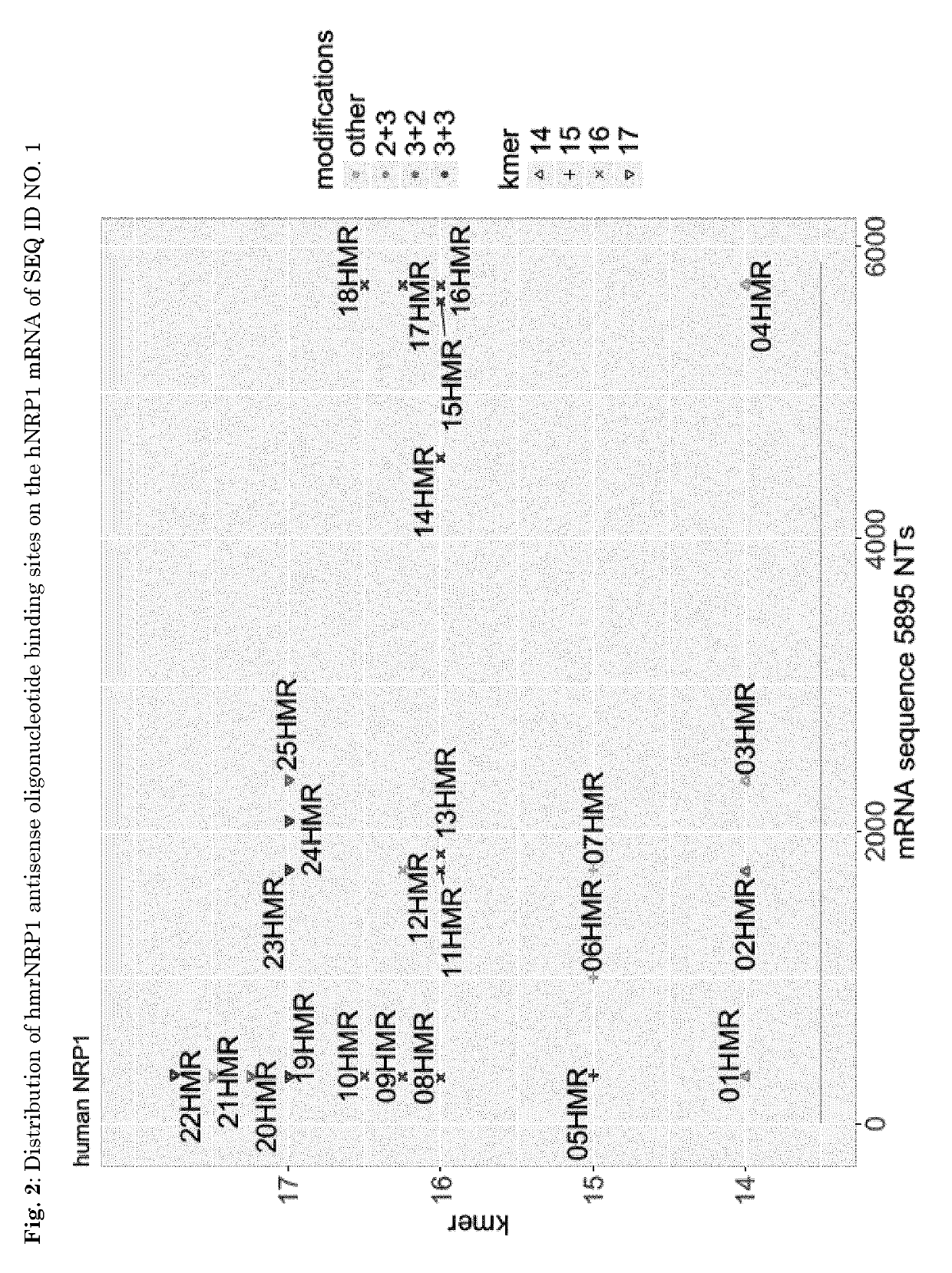Oligonucleotides inhibiting the expression of nrp1
- Summary
- Abstract
- Description
- Claims
- Application Information
AI Technical Summary
Benefits of technology
Problems solved by technology
Method used
Image
Examples
example 1
Human, Mouse and rat NRP1 Antisense Oligonucleotides
[0045]For the design of antisense oligonucleotides with specificity for human (h), mouse (m), rat (r) NRP1, the hNRP1 mRNA sequence with SEQ ID No. 1 (seq. ref. ID NM_003873.5; FIG. 1) was used. 14, 15, 16 and 17mers were designed according to in-house criteria, negl (described in WO2014154843 A1), scrambled 6 (S6) or scrambled 5 (S5) (Table 1) were used as control antisense oligonucleotides indicated in the respective experiments. The distribution of the antisense oligonucleotide binding sites on the hNRP1 mRNA is shown in FIG. 2.
example 2
Screen of hmrNRP1 Antisense Oligonucleotides in Human and Mouse Cancer Cell Lines
[0046]In order to analyze the efficacy of hmrNRP1 antisense oligonucleotides of the present invention with regard to the knockdown of human and mouse NRP1 mRNA expression in cancer cell lines, SKOV-3 (human ovary adenocarcinoma) and Renca (mouse renal cell carcinoma) cells were treated with a single concentration of 10 ∥M (without addition of any transfection reagent; this process is called gymnotic delivery) of the respective antisense oligonucleotide as shown in FIG. 3A and 3B. Human and mouse NRP1 and HPRT1 mRNA expression were analyzed after three days using the QuantiGene Singleplex assay (Affymetrix) and hmNRP1 expression values were normalized to HPRT1 values. Strikingly, as shown in FIG. 3A (SKOV-3 cells) and 3B (Renca cells), a knockdown efficiency of >80% was observed for 2 and 13 antisense oligonucleotides, respectively. Values of the mean normalized mRNA expression of hmNRP1 compared to non-...
example 3
on Analysis of Antisense Oligonucleotide Efficacy in Human SKOV-3 and Mouse Renca Cells
[0047]To further select the candidates with the highest activity in both tested cell lines, SKOV-3 and Renca cells, a correlation analysis was performed (data derived from FIG. 3A and 3B). As depicted in FIG. 4, 5 potent antisense oligonucleotides were selected for further investigation, namely A15001HMR (SEQ ID No. 3), A15005HMR (SEQ ID No. 2), A15006HMR (SEQ ID No. 4), A15008HMR (SEQ ID No. 5) and A15011HMR (SEQ ID No. 6). Importantly, the control antisense oligonucleotide negl had no negative influence on the expression of hmrNRP1 in both cell lines.
Example 4: IC50 Determination of Selected hmrNRP1 Antisense Oligonucleotides in Renca Cells (mRNA Level)
[0048]In order to determine the IC50 of the hmrNRP1 antisense oligonucleotides A15005HMR (SEQ ID No. 2) and A15001HMR (SEQ ID No. 3), Renca cells were treated with the respective antisense oligonucleotide at concentrations of 10 ∥M, 5 μM, 1 μM, 50...
PUM
| Property | Measurement | Unit |
|---|---|---|
| Fraction | aaaaa | aaaaa |
| Concentration | aaaaa | aaaaa |
Abstract
Description
Claims
Application Information
 Login to View More
Login to View More - R&D
- Intellectual Property
- Life Sciences
- Materials
- Tech Scout
- Unparalleled Data Quality
- Higher Quality Content
- 60% Fewer Hallucinations
Browse by: Latest US Patents, China's latest patents, Technical Efficacy Thesaurus, Application Domain, Technology Topic, Popular Technical Reports.
© 2025 PatSnap. All rights reserved.Legal|Privacy policy|Modern Slavery Act Transparency Statement|Sitemap|About US| Contact US: help@patsnap.com



